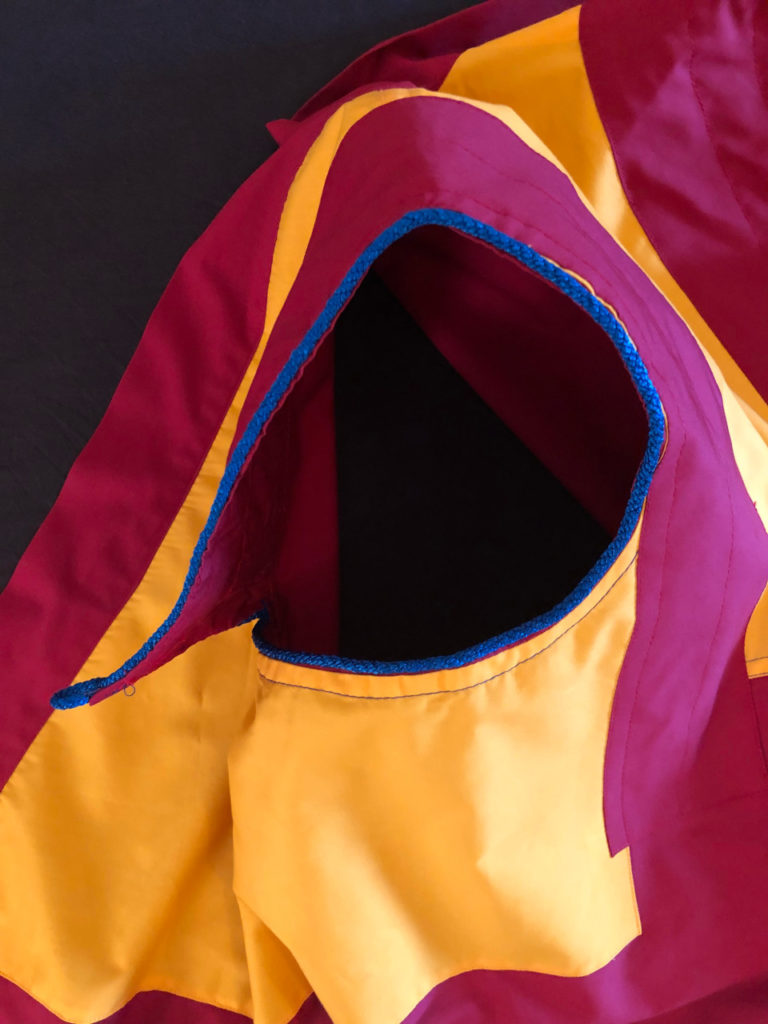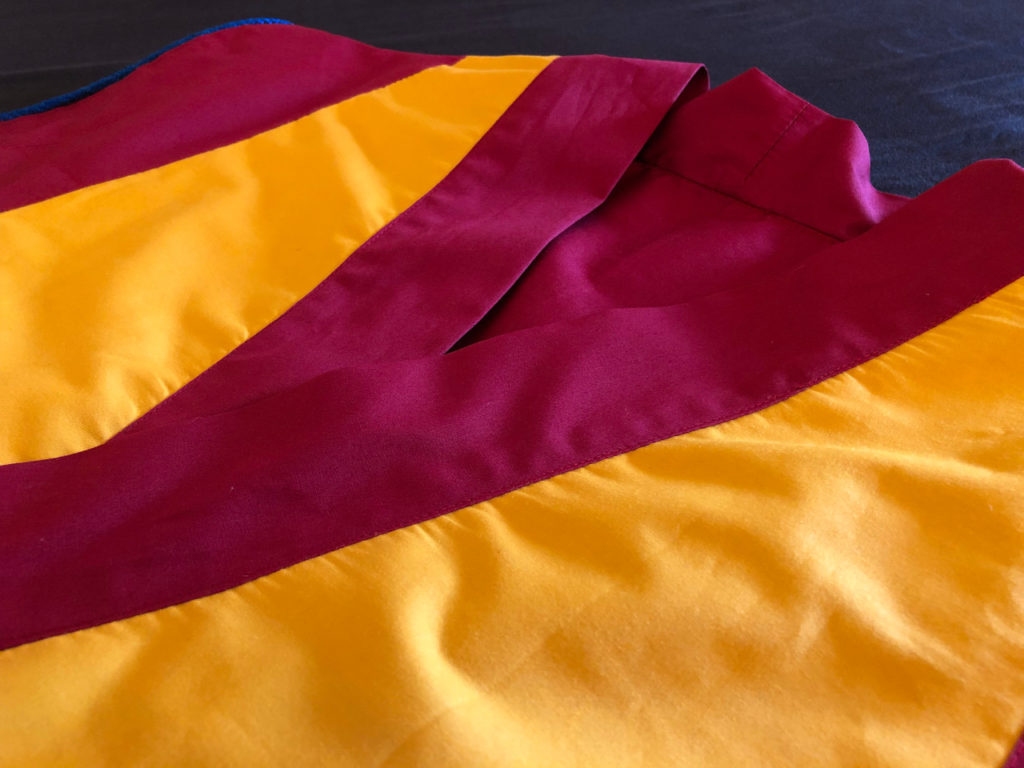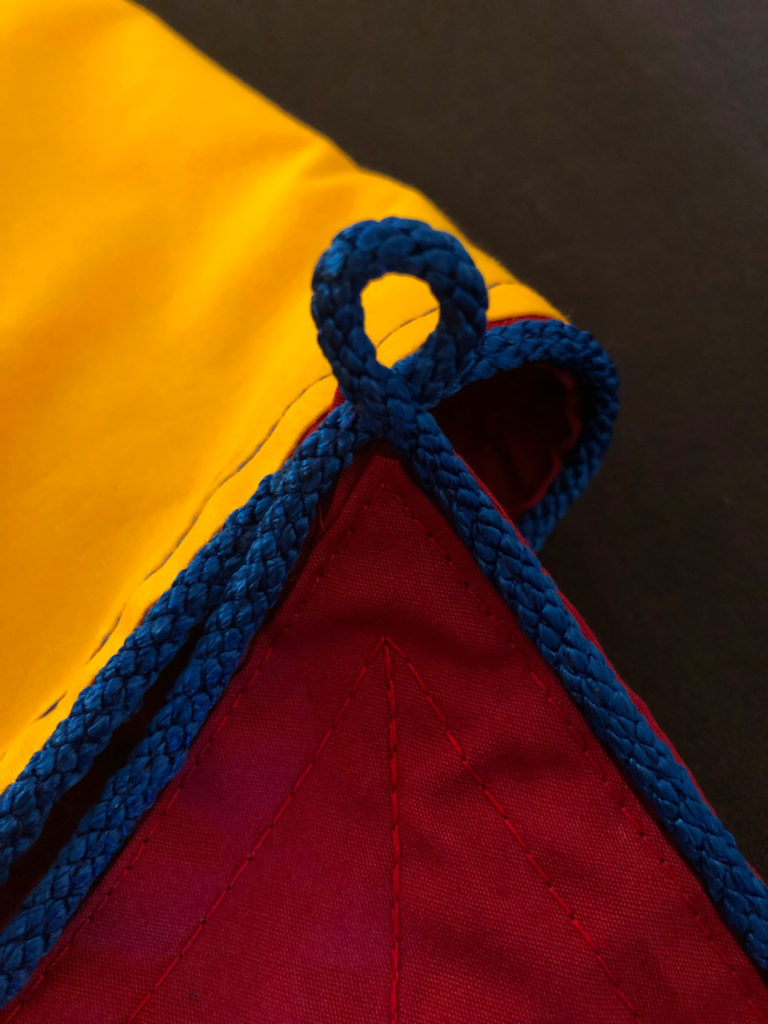
Donka
This upper garment was introduced by Je Tsongkhapa. It is worn with the left (represents grasping of self) over the right (represents grasping of other phenomena). Self-grasping /self cherishing is the most important one to destroy.

The armhole, the long strip and small flap represent the elephant eye, trunk and ear respectively. The elephant often symbolizes ignorance in Buddhism. The ear can be seen as the elephant like mind and the eye-hole as the means to control it.

The “V” neck symbolizes the jaws of a crocodile or the Lord of Death, reminding Buddhist that as humans we might die at any time. Therefore each moment of life should be not be wasted and instead be used meaningfully.

Blue cord reminds us of when there were not enough people to form a Sangha community, so a member of another tradition agreed to make up the community in numbers. The loops of the blue braid were vestiges of a time when the loops were bigger and for putting thumbs through while walking. It was done so as not to harm invisible beings by letting the arms wave around too much. Nowadays the loops are made much smaller but the meaning of conscientiousness is still preserved. Again, the blue colour here is to remind us to engage in tantric moral discipline.
Source: Adopted from “The Sewing Book” from the Madhyamaka Kadampa Meditation Centre, rephrased into smooth sentences and full paragraphs.